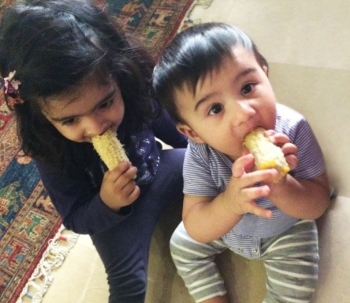Lack of adherence to complementary feeding in middle socioeconomic status Pakistani infants and young children
Abstract
PURPOSE. Nine- and one-half percent of Pakistani children under five years of age are overweight, compared to the worldwide estimate of 5.6%. To help prevent under and over nutrition WHO recommends assessing infant and young child feeding practices for targeted interventions. The objective of our study was to compare the dietary practices of metro and non-metro, middle socioeconomic class Pakistani children to WHO guidelines.
METHODS. Trained female interviewers went door to door in arbitrarily selected middle-class neighborhoods of 7 cities and if children aged 6-23 months resided in the household, their mothers were asked to answer a questionnaire about their children’s initial and complementary feeding practices and specifically, their intake in the previous 24 hours. Results of the survey were compared to WHO recommendations.
RESULTS. The questionnaire was completed by 192 mothers. Results indicated that 27% of sample children had already received some food apart from any milk before age 6 months; for 6% this had occurred before the age of 3 months. In the 7–12-month-old group, 11% had not yet received any complementary foods while this was the case for 6% of those aged 13–23-months. Only 49% of the 12-17-month-old and 60% of the 18-23 achieved minimum dietary diversity. Of the 13–23-month-olds, 80% routinely received sucrose-added foods and 71%, soft drinks.
CONCLUSIONS. Major deviations from WHO recommendations were observed. These included inadequate food diversity, early and late introduction of complementary feedings, and routine feeding of sweetened foods and beverages. These findings should be taken into consideration when implementing educational measures for infant and young child feeding.

Authors retain all copyrights. In making a submission to World Nutrition, they are certifying that all material is theirs except quotations, as indicated, and that they have obtained permission for any photos, tables, or graphics taken from other publications or websites.




